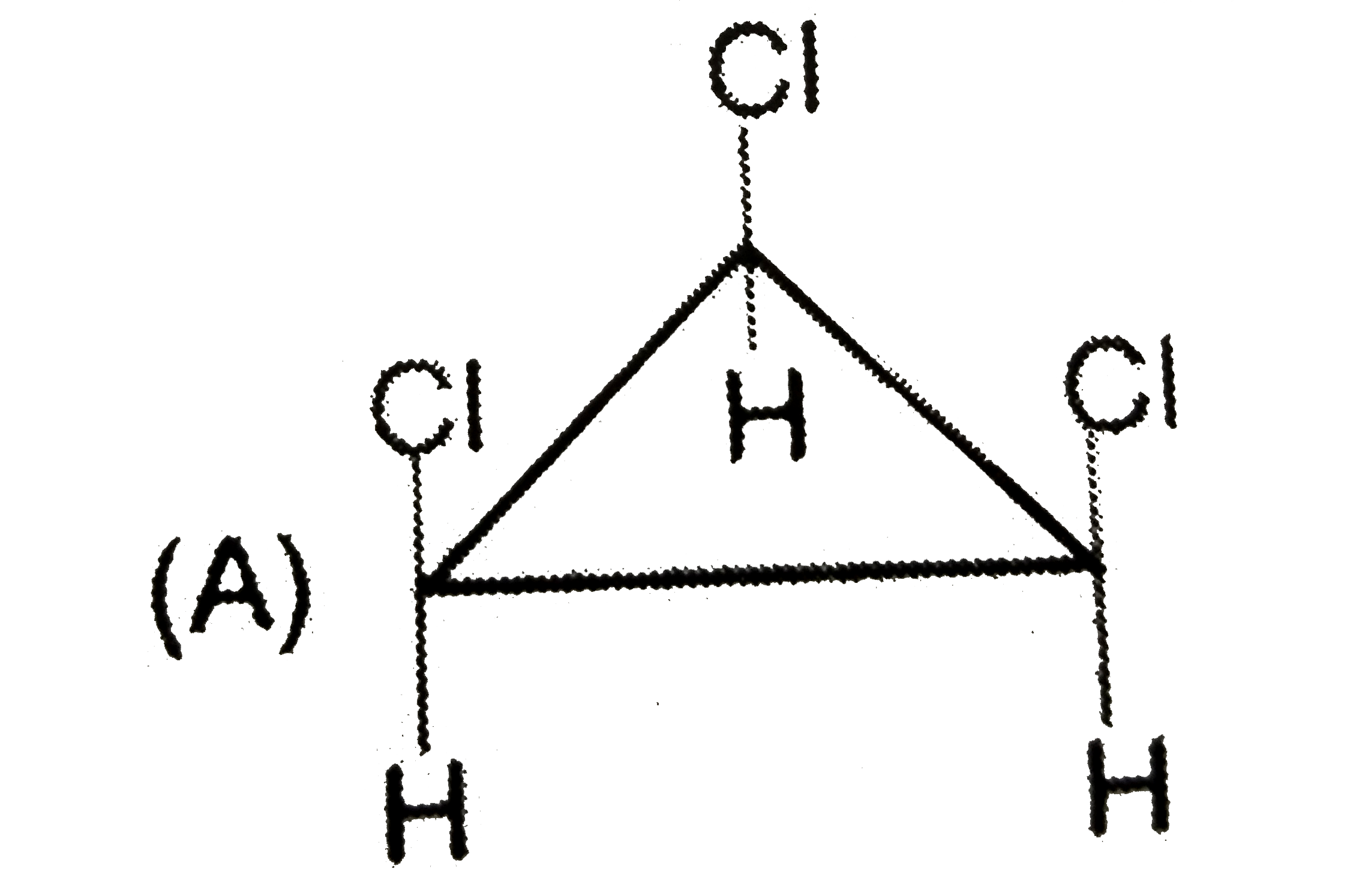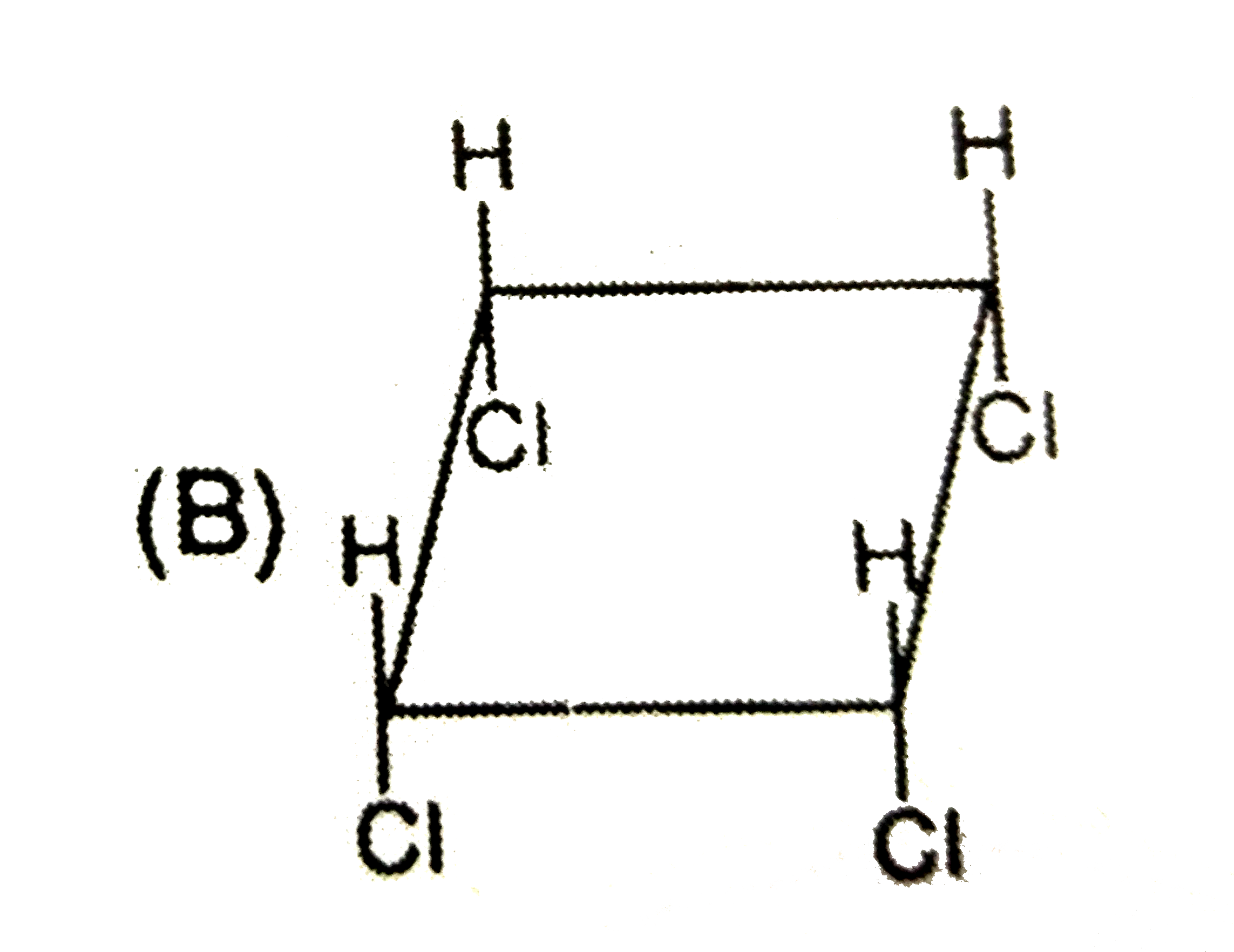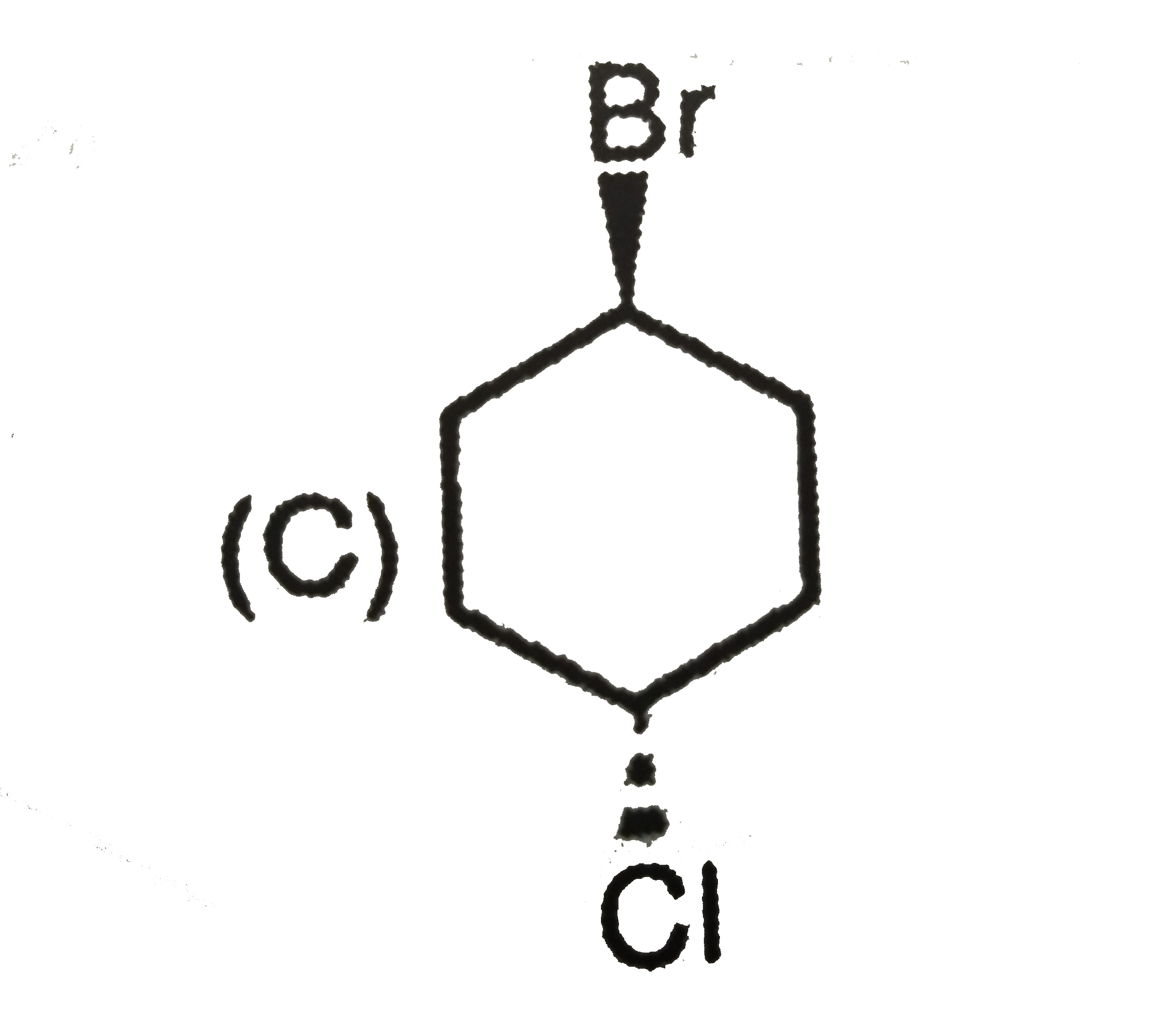Explore topic-wise InterviewSolutions in .
This section includes InterviewSolutions, each offering curated multiple-choice questions to sharpen your knowledge and support exam preparation. Choose a topic below to get started.
| 17451. |
Write IUPAC name of the monomer of natural rubber. |
|
Answer» SOLUTION :IUPAC name of MONOMER of natural rubber 3-Methyl buta-1,3-diene `overset(4)(CH_2) = overset(CH_3)overset(|3)C-overset(2)(CH) = overset(1)C H_2` |
|
| 17452. |
Which of the following molecule is chiral. |
|
Answer»
|
|
| 17453. |
Which of the following is most effective electrolyte in the coagulation of Fe_2O_3. H_2O //Fe^(3+) sol ? KCl, AlCl_3, MgCl_2, K_4[Fe(CN)_6] |
| Answer» Solution :`K_4[Fe(CN)_6]` is the most EFFECTIVE ELECTROLYTE because it GIVES `[Fe(CN)_6]^(+)` IONS which have the maximum negative charge. | |
| 17454. |
Total secondary amine compounds possible (benzene derivations) for C_(8)H_(11)N |
Answer» 
|
|
| 17455. |
Which one of the following compounds is not a vitamin: |
|
Answer» ASCORBIC acid |
|
| 17457. |
What is the order with respect to each of the reactant and overall order of the following reactions ? (a) 5Br_((aq))^(-)+BrO_(3(aq))^(-)+6H_((aq))^(+)rarr3Br_(2_((l)))+3H_2O_((I)) The experimental rate law is Rate =k[Br^(-)][BrO_3^-][H^+]^2 (b) CH_3CHO_((g))overset(Delta)rarrCH_(4(g))+CO_((g)) the experimental rate law is Rate =k[CH_3CHO]^(3//2) |
|
Answer» Solution :(a) First ORDER with RESPECT to `Br^-` , first order with respect to `BrO_3^-` and SECOND order with respect to `H^+` . Hence the overall order of the reaction is equal to (b) Order of the reaction with respect to ACETALDEHYDE is `3/2` and overall order is ALSO `3/2` . |
|
| 17458. |
What is the correct order of reactivity of alcohols in the following reaction? R-OH +HCl overset(ZnCl_(2))to R-Cl+H_(2)O |
|
Answer» `1^(@) gt 2^(@) gt 3^(@)` |
|
| 17459. |
When an oxide of Mn (B). Compound (B) disproportionate in neutral or acidic solution to give purple compound |
| Answer» Solution :`B : K_(2) MnO_(4)` | |
| 17460. |
Which of the following statements is truw about saturated solution? |
|
Answer» A SOLUTION in which no more SOLUTE can be DISSOLVED at the same temperature and pressure |
|
| 17461. |
Which reagent gives purple colouration with phenol? |
|
Answer» ANHYDROUS `AlCl_3` |
|
| 17462. |
When CS_(2) Layer containingboth Br_(2) and I_(2) is shakenwith excess of CI_(2) water the violetcolour due to I_(2) disappearance of violetcolour and appereance of paleyellow colour is due to the formationof |
|
Answer» `I_(3)^(Θ)` and `Br_(2)` RESPECTIVELY |
|
| 17463. |
The value of K_p is 1 xx 10^(-3)atm^(-1) at 25^@C for the reaction 2NOCI+CI_2 hArr 2NOCI. A flask contains NO at 0.02 atm and 25^@C . Calculate the moles of CI_2 that must be added if 1% of NO is to be converted to NOCI at equilibrium . The volume of the flask is such that 0.2 moles of the gas produce 1atm pressure at 25^@C (ignore the probable association of NO to N_2O_2) |
|
Answer» |
|
| 17464. |
The reduction potential to calomel decreases with |
|
Answer» DECREASE in CONCENTRATION of KCl |
|
| 17465. |
What is salt bridge? How is it represented in a cell diagram? |
|
Answer» Solution :(i) In the complete CELL DIAGRAM, the two half cells are separated by a double vertical line (salt BRIDGE) in between. (II) The zinc-copper cell can now be written as `UNDERSET("ANODE HALF-CELL")(Znabs(Zn^(2+)""))underset("CATHODE HALF-CELL")(abs(""Cu^(2+)"")""Cu)` |
|
| 17466. |
Which of the following is the strongest base in aqueous solution |
|
Answer» `(CH_(3))_(3)N` |
|
| 17467. |
Which one of the following is wrongly matched? |
|
Answer» Saponification of `CH_(3COOC_(2)H_(5)` - second order reaction |
|
| 17468. |
Which of the following statements are incorrect about penicillin ? |
|
Answer» An antibacterial fungus |
|
| 17469. |
Which polymer is used to prepare plastic crockery ? |
|
Answer» MELAMINE |
|
| 17470. |
When two equal sizedpieces of thesame mental at different temperature T_(h) (hot piece) and T_(c)(cold piece ) are brought intothremal constant and isolated from it's surrounding. The totalcharge in entropy of system is given by |
|
Answer» Total `DeltaS = C_(v)ln.((T_(c) + T_(h))/(2T_(c))) + C_(v)ln .((T_(c) + T_(h))/(2T_(h)))= C_(v)ln.((T_(c) + T_(h))^(2))/(4T_(c).T_(h))` |
|
| 17471. |
Which characterstics of zero group elements is common |
|
Answer» Each of them has the same atomic NUMBER |
|
| 17472. |
Which of the following is least reactive towards nucleophilic substitution with aqueous KOH? |
|
Answer»
|
|
| 17473. |
Which of the following will give blood red colour with FeCl_(3) in sodium extract ? |
|
Answer»
|
|
| 17474. |
Write the structure of an isomer of compound C_(4)H_(9)Br which is most reactive towards S_(N)1 reaction. |
|
Answer» Solution :`3^(@)` Alkyl halides are most REACTIVE towards `S_(N)1` REACTION. Now a `3^(@)` alkyl BROMIDE having `MF" "C_(4)H_(9)Br` is 2-bromo-2-methylpropane, i.e., `UNDERSET("2-Bromo-2-methylpropane "(3^(@)))(CH_(3)-underset(Br)underset(|)overset(CH_(3))overset(|)(.^(3^(@))C)-Br)` `therefore`2-Bromo-2-methylpropane is most reactive towards `S_(N)1` reactions. |
|
| 17475. |
Which of the following pair of elements are called chemical twins ? |
|
Answer» ZR and Hf |
|
| 17476. |
Thecell, Zn|Zn^(2+)(1M)||Cu^(2+)(1M) |Cu (E_("cell")^(@)=1.10V) was allowed to be completely discharged at 298 K. Therelative concentration of Zn^(2+) to Cu^(2+)(([Zn^(2+)])/([Cu^(2+)])) is |
|
Answer» `9.65 xx10^(4)` `E_(cell) =E_(cell)^(@)-(0.059)/(2) log ""([(ZN^(2+))/(Cu^(2+))])/([Cu^(2+)])` or `0=1.1-(0.059)/(2)log ""(([Zn ^(2+)])/([Cu^(2+)]))` `log ""(([Zn^(2+)])/([Cu^(2+)]))=(2xx 1.1)/(0.059)=37.3` `therefore (([Zn^(2+)])/([Cu^(2+)]))=10^(37.3)` |
|
| 17477. |
The smallest units in living organism is |
|
Answer» Organelle |
|
| 17479. |
Which of the following pyroacid has X-X bond |
|
Answer» <P>`H_(2)S_(2)O_(7)` (II) `HO-underset(O)underset(||)overset(O)overset(||)S-overset(O)overset(||)S-OH` (iii) `H-O-overset(O)overset(||)P-O-overset(O)overset(||)P-OH` (iv) `H_(4)P_(2)O_(6): HO-underset(OH)underset(|)overset(O)overset(||)P-underset(OH)underset(|)overset(O)overset(||)P-OH` |
|
| 17480. |
Which of the following is not metamer ? |
|
Answer» `C_(2)H_(5)OC_(2)H_(5)` |
|
| 17481. |
Write structures of the following compounds : (i) 2-Chloro -3- methylpentane(ii) 1-Chloro -4- ethylcyclohexane (iii) 4- Tert.Butyl-3-iodoheptane(iv) 1, 4-Dibromobut -2- ene (v) 1-Bromo -4-sec. butyl -2-methylbenzene |
|
Answer» Solution :Structures of the GIVEN compounds are given below : (i) `overset(1)CH_(3) - underset(Cl)underset(|)overset(2)CH - underset(CH_(3))underset(|)overset(3)(CH) - overset(4)CH_(2)overset(5)CH_(3)` 2-Chloro -3- methylpentane (ii)  (iii)  (iv) `Broverset(1)CH_(2) - underset("1, 4-Dibromobut -2-ene ")(overset(2)CH = overset(3)CH- overset(4)CH_(2)Br)` (v) 
|
|
| 17482. |
Write the catalyst used in the decomposition of potassium chlorate to get potassium chloride and oxygen. |
| Answer» SOLUTION :MANGANESE DIOXIDE of `MnO_2`. | |
| 17483. |
What type of solutions are formed on dissolving different concentration of soap in water? |
| Answer» SOLUTION :Soap at a lower concentration behaves as ELECTROLYTE. HOWEVER, if the concentration exceeds critical micelle concentration, the soap MOLECULES aggregates to FORM a micelle that behaves like a colloid. | |
| 17484. |
Which of the following does not form negatively charged sol ? |
| Answer» Solution :Methylene blue | |
| 17485. |
which of the following dissolves in water to give a neutral solution |
|
Answer» `(NH_(4))_(2)SO_(4)` |
|
| 17486. |
Which of the following statement(s) is/are correct |
|
Answer» Transition element exhibit higher enthalpies of atomization as they have STRONGER interatomic interaction |
|
| 17487. |
When an ion leaves its correct lattice site and occupies interstitial sites in its crystal lattice, it is called: |
|
Answer» CRYSTAL defect |
|
| 17488. |
Which of the following give linear plots |
|
Answer» <P>`"LOG" x/m "VERSUS log" C` |
|
| 17489. |
What are natural and synthetic polimers? Give two examples of each type. |
|
Answer» Solution : Natural polymers: Polymers which are FOUND in nature, i.e., in animal and plants are called natural polymers. For EXAMPLE, proteins, STARCH, CELLULOSE etc. Synthetic polymers: Man - made polymers are called synthetic polymers. For example plastics, synthetic FIBRES. |
|
| 17490. |
What is the most common type of reactions of aromatic compounds ? |
|
Answer» ADDITION REACTION |
|
| 17491. |
Which will not go for diazotisation |
|
Answer» `C_(6)H_(5)NH_(2)` |
|
| 17492. |
Two test tubes containing a nitrate and a bromide are treated separately with conc, H_(2)SO_(4) brown fumes evolved are passed in water. The water will be coloured by vapours evolved from the test tube containing |
|
Answer» Nitrate |
|
| 17493. |
Which of the following is satisfied by an ideal solution ? |
|
Answer» Formation of an azeetropic MIXTURE |
|
| 17494. |
What is the oxidation state of the central atom in [Fe(EDTA)) complex ion. |
|
Answer» SOLUTION :`3` `X + 1x x (-4)= -1` THEREFOUR`x=3` |
|
| 17495. |
What are the limitations of valemce bond theory? |
|
Answer» Solution :(1) It does not explain the MAGNETIC properties of the COORDINATION compounds in detail. (2) It does not explain thermodynamic STABILITY of complexes. (3) It does not explain colours or spectroscopical properties of complexes. (4) It does not help to predict the strength of the ligands (WEAK or strong). |
|
| 17496. |
Which of the following compound doesn't hydrolyse by S_(N)1 mechanism ? |
|
Answer» `CH_(2)=CHCH_(2)Cl` |
|
| 17497. |
When the vapours of tertiary butyl alcohol are passed through heated copper at 573 K, the product formed is |
|
Answer» but - 2 - ENE |
|
| 17498. |
What is Chloropicrin? How is it prepared? Give its uses. |
|
Answer» Solution :`"CC"l_(3)NO_(2)` is Chloropicirin. It is prepared from nitro methane with `Cl_(2)` in the presence of NaOH. The `alpha`- H atom of nitroalkanes are SUCCESSIVELY replaced by HALOGEN atoms. `CH_(3)NO_(2)+3Cl_(2)overset(NaOH)(to) UNDERSET("Chloropierin")("CC"l_(3)NO_(2))+3HCL` It is used as an insecticide. |
|
| 17499. |
When fruits and vegetables that have been dried are placed in water, they swell in size and regain their original form why ? Would a temperature increse accelerate this process ? |
| Answer» SOLUTION :DUE to OSMOSIS which incrases with RISE in TEMPRETURE | |
| 17500. |
Which explains the effect of a catalyst on the rate of a reversible reaction ? |
|
Answer» It PROVIDES a new REACTION pathway with a lower activation energy |
|










